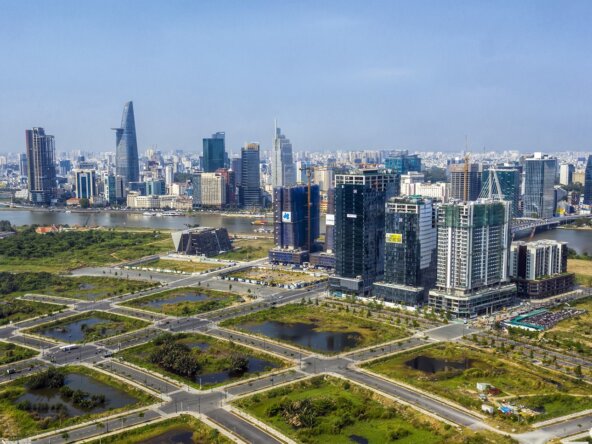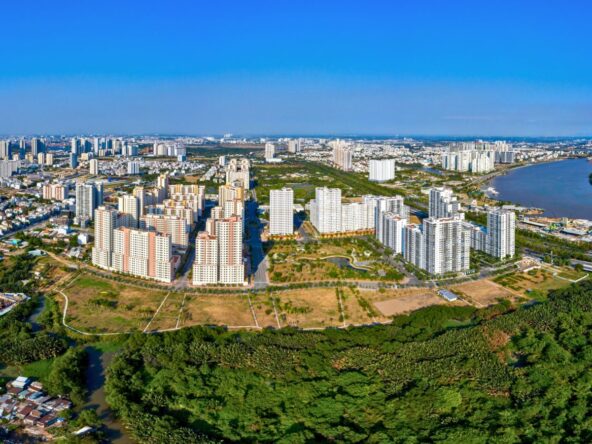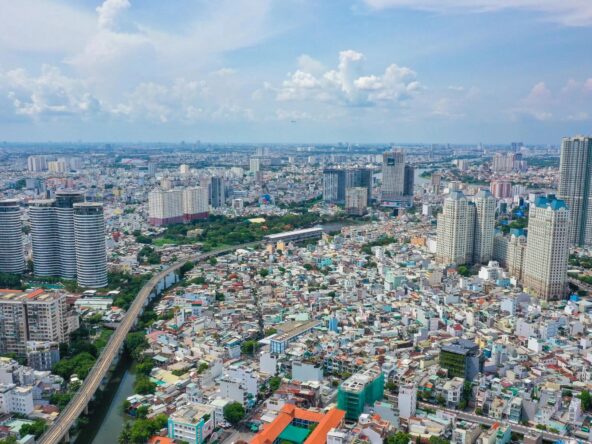It can be seen that the strong development of e-commerce is reshaping the logistics market and creating more diverse asset classes, the most prominent of which is urban logistics real estate.
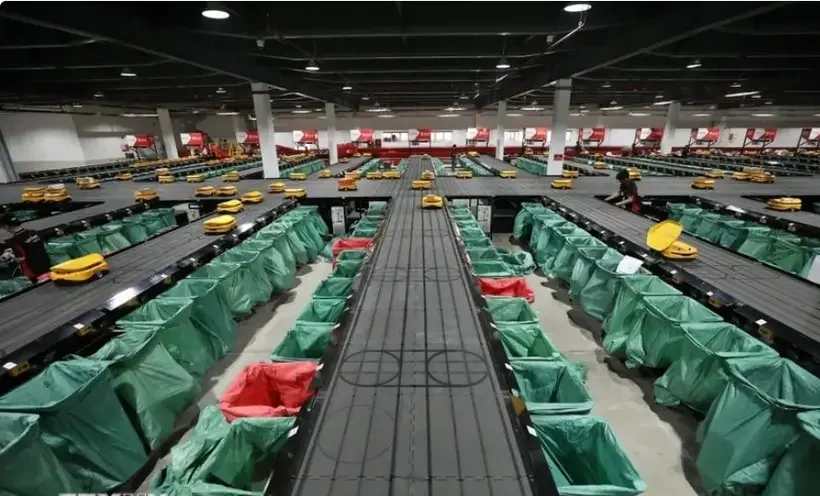
Vietnamese consumers increasingly prefer the convenience of online shopping, driving the wave of moving goods storage from retail stores to warehouse space.
It can be seen that the strong development of e-commerce is reshaping the logistics market and creating more diverse asset classes, the most prominent of which is urban logistics real estate.
Vietnam has become one of the most potential e-commerce markets in ASEAN.
According to the Southeast Asia e-commerce report 2020 by Google, Temasek and Bain & Company, the average growth rate in the period of 2020-2025 is 29% and by 2025, the scale of Vietnam’s e-commerce will reach 52 billion USD.
Cushman & Wakefield’s experts shared: Urban logistics real estate is receiving a lot of attention from the media and investors. Although the concept is different, this new field is often confused with the urban logistics model. While a logistics city can be understood as an urban model associated with the development of logistics services, taking logistics services as a key economic sector.
Usually, logistics cities will be associated with an important type of infrastructure for logistics services such as seaports, international airports. Urban logistics is urban-centric, serving mainly consumer demand in cities.
Demographic trends indicate an increase in last-mile delivery orders in urban areas. This is especially true in Vietnam, where nearly 40 million people live in cities. However, urban delivery costs are also increasing, amounting to 50% or more of the total cost of the supply chain. As a result, e-commerce investors are eager to acquire logistics real estate capable of reaching the inner city within a 30-minute drive. This is also the top priority goal of developers to increase competitive advantage.
Currently, due to expensive land costs and stakeholder opposition to logistics in the city, urban logistics projects are mainly located in sub-central or suburban areas.
According to data from Cushman & Wakefield, as of Q4/2023, the Southern Key Economic Region recorded a total logistics supply of about 5.5 million m2 of floor space; in which, Ho Chi Minh City accounts for about 14% of the total supply. The Northern Key Economic Region recorded a logistics supply of about 2.2 million m2 of floor space; in which, Hanoi accounted for 12% and Hai Phong accounted for 26% of the total supply.
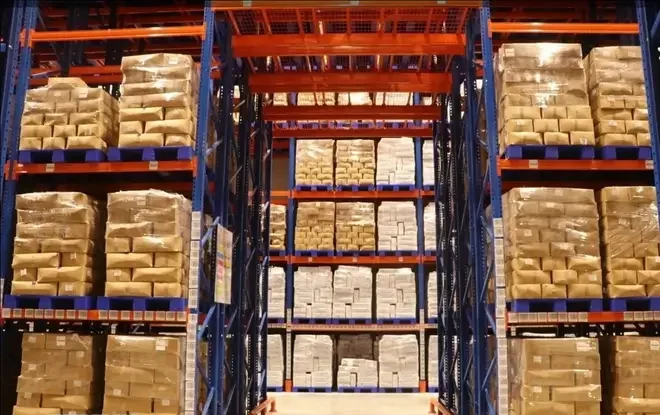
According to experts of Cushman & Wakefield Vietnam, the need to build logistics real estate for retail is usually rectangular, with an area from 3,000m2 to 7,000m2, with 5 berth doors for pickup trucks; The floor is raised across the truck, the ceiling is 6m high, there is a spacious land area for parking and waiting for cars.
While real estate for 3PL companies (third parties that take care of the storage and transportation of goods) and parcels require land of narrow length, ranging in size from 5,000m2 to 7000m2, there are 5 doors for pickup trucks; Many side doors on both sides of the building for trucks parked outside, doors for trucks are also lined up inside, ceiling height 6m.
In Ho Chi Minh City and Hanoi, the scarcity of available land and logistics facilities causes developers to take advantage of a variety of properties, often old buildings or vacant lots. Although older buildings are riskier and less efficient in terms of operations such as unloading from pickup trucks, trucks as well as storing goods.
However, the location of logistics warehouses located near intra-city delivery points remains a top priority for 3PLs (third-party logistics), e-commerce retailers, and parcel companies. In some cases, older buildings are refurbished for relatively better quality. With this position, retailers will attract many customers thanks to their ability to deliver goods quickly.
In the context of densely populated land, higher urban population density means greater obstacles to logistical land use. There is currently a large gap between the required urban logistics space and the actual quantity.
Bridging this gap requires time and financial investment to address barriers to logistics use in cities. Local governments and investors need to strategize for an “urban spatial model.” Quantify the total demand for urban logistics space in Vietnam’s leading e-commerce markets based on current and future online sales volumes.
Ho Chi Minh City currently has 9,600 enterprises registered in the logistics service industry (accounting for 36.7% of the country). The city also accounts for 54% of enterprises providing professional logistics services of the country (about 2,700 enterprises). However, small-scale and micro-sized enterprises operating logistics activities in the city still account for a large proportion, from 40-50%.
In the coming years, the likely scenario is that warehouses are built underground, trucks are converted to electric trucks, which would address stakeholder objections because trucks are the cause of noise and air pollution.
To remain competitive, attractive and environmentally friendly, cities must engage in solutions that help reduce the cost and difficulty of urban logistics; Focus on investing in the development of passenger transport infrastructure, logistics infrastructure, increasing cargo handling capacity, capacity of seaport warehouses, investing in leading supply chains to form a regional logistics service supply center.
At the same time, it will gradually restructure market share, prioritize the development of market share of railway, inland waterway and aviation transport to reduce pressure on road transport.


